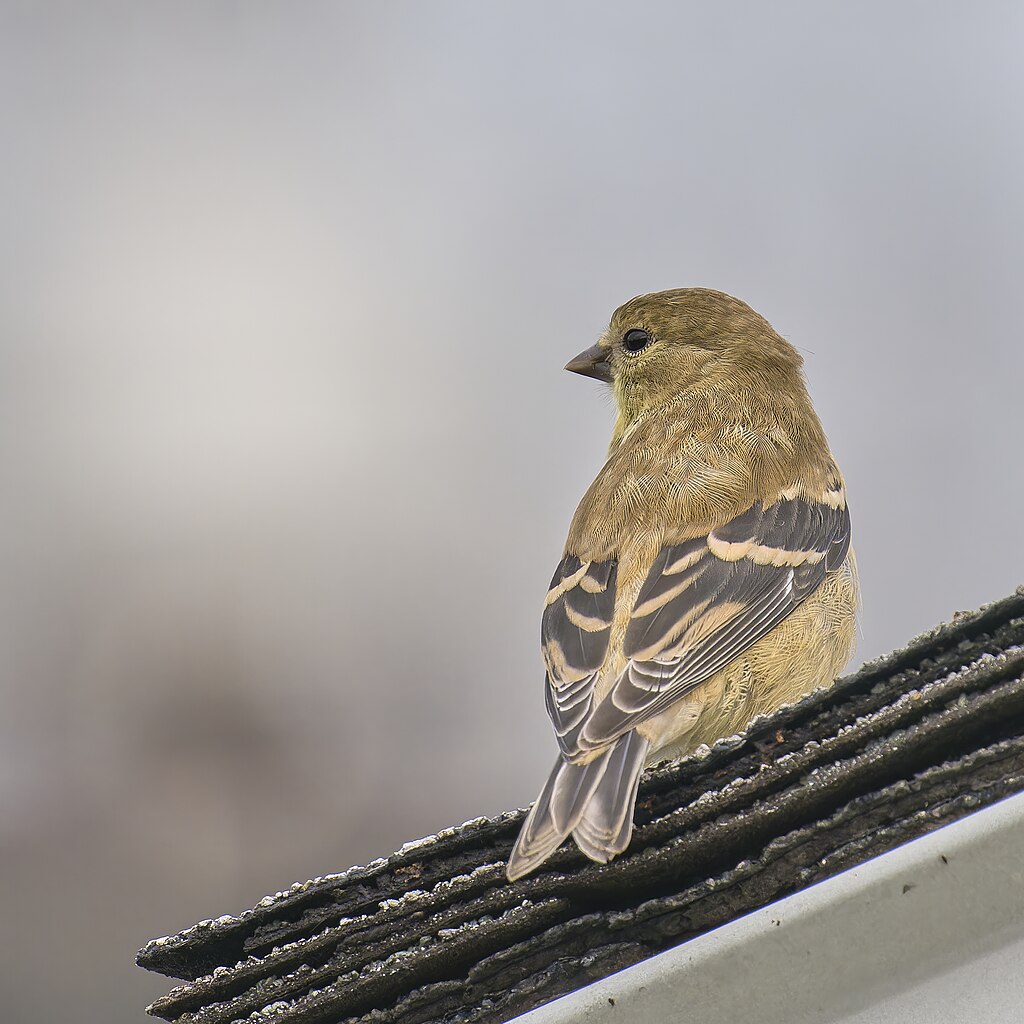
Bird Science - American Goldfinch
Share
1. Species Overview
The American Goldfinch (Spinus tristis) is a small migratory finch in the Fringillidae family, native to North America. It undergoes dramatic seasonal plumage changes and is renowned for its bright yellow breeding feathers and undulating "bouncy" flight pattern. As a strict seed-eater, it plays a key ecological role in seed dispersal. It holds official status as the state bird of Iowa, New Jersey, and Washington.
2. Physical Identification
-
Breeding males exhibit vibrant lemon-yellow bodies, jet-black foreheads, wings, and tails, with distinct white wing bars and patches.
-
Females/non-breeding males display olive-brown upperparts and pale yellow underparts, with muted black wings.
 Females
Females

Non-breeding males
-
Unique molting cycle: The only North American finch to molt twice annually (spring and late summer). Winter plumage is drab for camouflage.
-
Size: 11–13 cm (4.3–5.1 in) long; wingspan 19–22 cm (7.5–8.7 in); weight 14–19 g.
-
Adaptations: Conical pink beak (ideal for seed-crushing), notched tail, and agile perching feet.
3. Distribution & Habitat
-
Range: Breeds across southern Canada to North Carolina; winters from southern Canada to Mexico. Migrates in large flocks.
-
Habitat Preferencеs:
-
Open areas: meadows, floodplains, roadsides, and orchards.
-
Avoids dense forests; thrives in weedy fields with thistle, sunflowers, and asters.
-
Highly adaptable to suburban gardens and bird feeders.
-
4. Behavior & Ecology
Feeding:
-
Diet: 97–98% seeds (specializing in composite plants like thistles, sunflowers, and dandelions). Rarely consumes insects.
-
Foraging: Acrobatic—often hangs upside-down to extract seeds. Visits feeders for nyjer (thistle) and sunflower chips.
Breeding:
-
Late nester: July–September (latest among North American songbirds), timed with peak seed abundance.
-
Nest construction: Tight-woven cup of plant fibers, lined with thistle down; built in shrubs/trees by females.
-
Parental care: Females incubate 2–7 pale blue eggs for 12–14 days. Both parents feed altricial young regurgitated seeds for 11–17 days.
Vocalizations:
-
Calls: Distinctive 4-note flight call ("po-ta-to-chip").
-
Song: Complex, canary-like warbles and trills by males during courtship.

5. Conservation Status
-
Population: Estimated 44 million individuals; stable trend (per IUCN and Partners in Flight).
-
Threats:
-
Window collisions: Major urban mortality cause.
-
Pesticides: Indirect harm via reduced seed sources.
-
Habitat loss: Decline in open meadows affects nesting.
-
-
Adaptability: Thrives in human-altered landscapes; benefits from conservation gardens and feeders.

6. Ecological & Cultural Significance
-
Seed control: Critical for managing "weed" plants (e.g., thistles).
-
State symbolism: Represents resilience and vibrancy in three U.S. states.
-
Cultural presence: Featured on U.S. stamps; common subject in birdwatching guides and art.
-
Scientific name origin: Spinus = finch, tristis = "sorrowful" (reflecting its subdued winter colors).

Key Adaptation: Delayed Breeding
Its late nesting strategy avoids competition and aligns with peak seed production—ensuring abundant food for chicks. This also reduces exposure to brood parasites like cowbirds, which finish breeding earlier.


